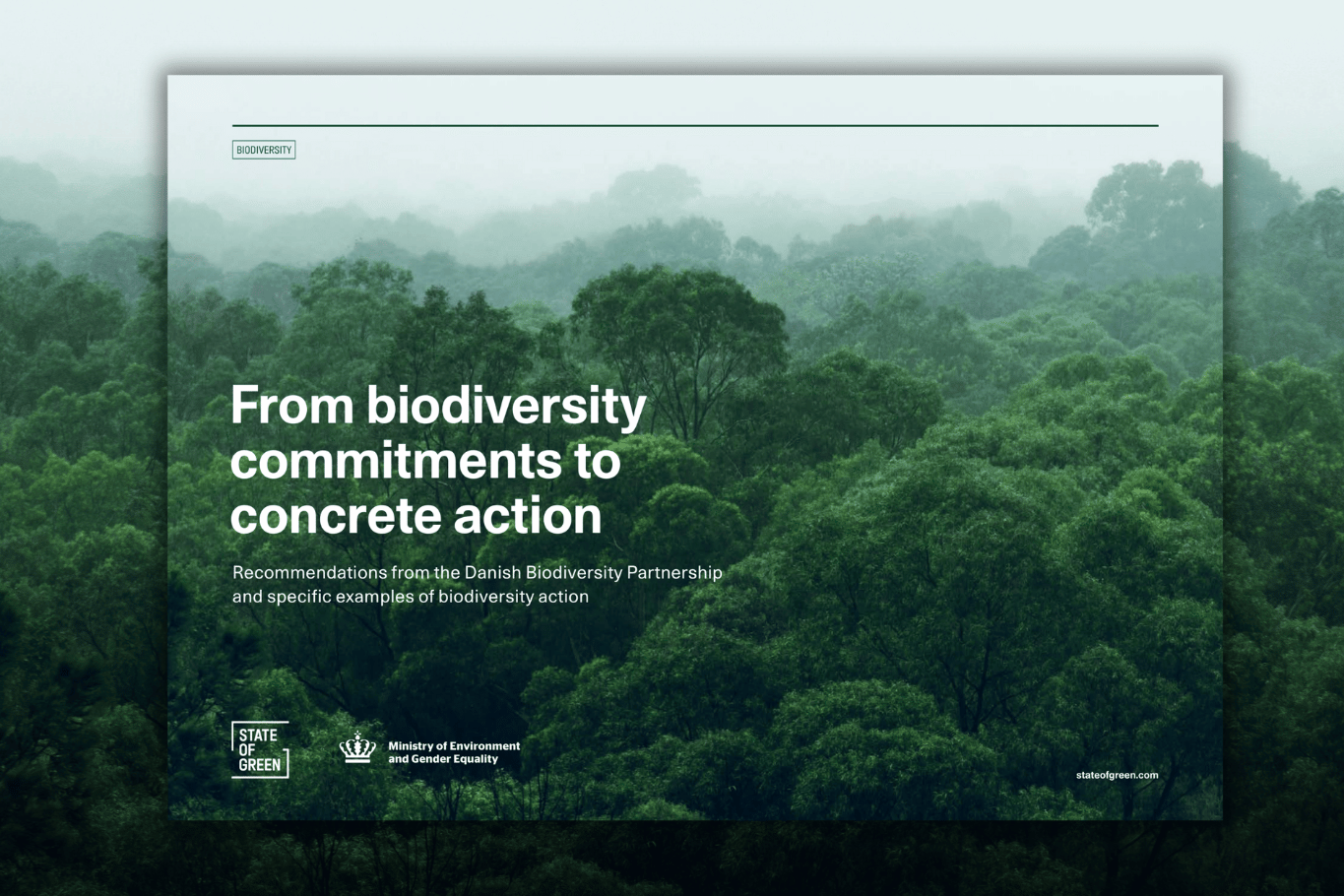From biodiversity commitments to concrete action
Download the publication to discover recommendations from the Danish Biodiversity Partnership and specific examples of biodiversity action.
Explore the publicationPerspective
Biodiversity
Biodiversity COP



Download the publication to discover recommendations from the Danish Biodiversity Partnership and specific examples of biodiversity action.
Explore the publicationIt is increasingly recognised that the biodiversity crisis is as critical as the climate crisis, and both are closely interrelated. Therefore, integrating biodiversity with climate adaptation, renewable energy development, and other societal priorities such as social sustainability, health, and food security is essential for future land use planning.
The World Economic Forum estimates that USD 44 trillion of economic value depends moderately or highly on nature and its services.
As nature and biodiversity decline, most companies face disruptions to their operations, supply chains, and markets. However, addressing biodiversity is complex, and many companies struggle to understand their impact and implement effective solutions.
This is further complicated by the growing recognition that a company’s biodiversity impact extends beyond its direct operations to its entire value chain. Companies also face the challenge of evolving sustainability regulations and the fear of being accused of greenwashing, which can discourage them from communicating their efforts.
Companies and financial institutions play a key role in tackling the biodiversity crisis, driven by two factors: their impact and dependencies on nature. A company’s impact refers to the effects its actions have on biodiversity, such as pollution or deforestation across its value chain. Dependencies refer to how businesses rely on ecosystems, like farmers needing healthy soil or pharmaceutical firms relying on biodiversity for new medicines.
Voluntary biodiversity actions can mitigate these risks and offer financial benefits, such as reduced resource consumption and increased consumer interest in sustainable products. These considerations are also attracting attention from financial institutions like banks and investors, who are increasingly assessing biodiversity risks as part of their long-term investment strategies. As investors, they have a vested interest in ensuring those businesses are managing biodiversity risks effectively.
In Denmark, the biodiversity crisis is recognised as a challenge on par with climate change.
Denmark’s public-private partnerships have previously proven effective in addressing complex challenges through collaboration. The public-private approach has been central to Denmark’s climate efforts and serves as a model for tackling the biodiversity crisis.
The Danish Biodiversity Partnership is an example of this collaborative approach, bringing together a broad spectrum of actors — from government bodies and businesses to NGOs and civil society – to explore how the private sector can address biodiversity.
The partnership also provides recommendations for other stakeholders, including government bodies, businesses and industry organisations, and research institutions, on how best to support companies in these efforts. The goal is for businesses to contribute more to halting biodiversity loss by mitigating negative impacts, acting on their dependencies on biodiversity, as well as actively supporting biodiversity restoration and preservation. Through cross-sector collaboration and clear guidelines, the Danish model provides valuable lessons that can be applied globally, guiding businesses and other stakeholders towards a more sustainable, biodiversity-friendly world.
Discover the the task of the Danish Biodiversity Partnership